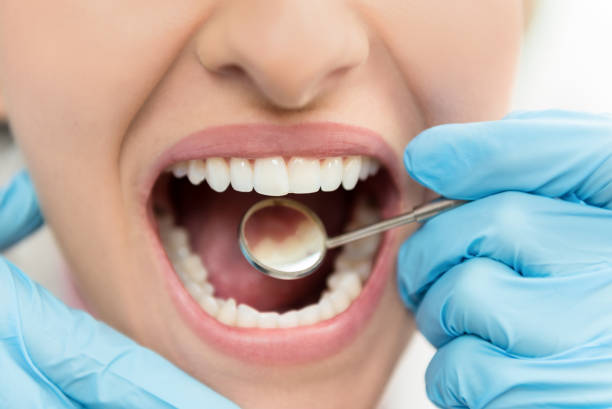How much is a filling without insurance? Maintaining good oral health is essential for overall well-being, and part of this regimen often includes dental procedures like fillings to address cavities and tooth decay.
However, the cost of these procedures can pose a significant concern, particularly for those without dental insurance coverage.
If you find yourself wondering about the expenses associated with dental fillings when insurance isn’t in the picture, you’re not alone.
Understanding the factors that contribute to the cost, exploring available options, and adopting preventive measures can empower you to make informed decisions about your dental care.
In this guide, we delve into the intricacies of dental filling costs when insurance coverage isn’t available.
Also Read:
How Much Is Invisalign without Insurance?
How Much Do Veneers Cost with Insurance?
How Much Is a Filling without Insurance?
The cost of a dental filling without insurance can vary based on several factors. The type of filling material used, the location of the dental practice, and the complexity of the procedure all play a role in determining the price.
On average, a simple amalgam (silver) filling might cost between $75 to $200 per tooth, while a composite (tooth-colored) filling could range from $100 to $250 or more.
However, these costs can increase if the cavity is larger or if the tooth is in a more challenging location.
In addition to the filling itself, there could be additional fees for a dental exam, X-rays, and the dentist’s expertise.
It’s important to note that neglecting a cavity could lead to more extensive dental work in the future, potentially increasing costs.
To make dental care more affordable, some dental clinics offer sliding-scale fees based on income, and there are also dental discount plans available.
Ultimately, prioritizing preventive oral care through regular dental check-ups and adopting good oral hygiene practices can help reduce the need for fillings and other costly procedures.
While the expenses of fillings without insurance can seem daunting, exploring different options and maintaining oral health can mitigate the financial burden associated with dental care.
Affordable Alternatives to Traditional Fillings
For individuals seeking affordable alternatives to traditional dental fillings, several options are available to consider.
One option is a glass ionomer filling, which releases fluoride and is often used on non-biting surfaces.
These fillings are generally more cost-effective than composite or amalgam fillings.
Additionally, dental sealants can be applied as a preventive measure to protect teeth from decay, potentially reducing the need for fillings in the first place.
Another alternative is resin-modified glass ionomer cement, combining the benefits of glass ionomer and resin composite materials.
While not as durable as traditional fillings, they offer a reasonable compromise between cost and functionality.
Community dental clinics and dental schools often provide reduced-cost or sliding-scale fee services, allowing individuals to receive dental care at a more affordable rate.
Moreover, discussing your financial concerns with your dentist can lead to flexible payment plans or suggestions for phased treatment to distribute costs.
Exploring dental discount plans or memberships can also provide savings on various dental procedures.
Emphasizing consistent oral hygiene practices and a balanced diet can further prevent cavities and the need for extensive dental work.
By exploring these alternatives and focusing on prevention, individuals can manage their dental health effectively without straining their finances.
Tips for Budgeting Dental Expenses
- Regular Check-ups: Prioritize preventive care by scheduling routine dental check-ups. Early detection and minor interventions can prevent costly treatments later.
- Research: Compare prices and services of different dental clinics. Look for those offering affordable rates without compromising quality.
- Dental Discount Plans: Explore dental discount plans that offer reduced rates for various procedures. These plans can significantly lower your out-of-pocket costs.
- Maintain Oral Hygiene: Practicing good oral hygiene minimizes the risk of cavities and gum issues, reducing the need for expensive treatments.
- Flexible Spending Account (FSA) or Health Savings Account (HSA): Contribute to these accounts to set aside pre-tax funds for dental expenses, providing financial relief.
- Payment Plans: Inquire if your dentist offers payment plans, allowing you to divide costs over time instead of paying upfront.
- Ask About Costs: Before any procedure, request a detailed cost breakdown. This prevents surprises and gives you a chance to explore cost-effective alternatives.
- Emergency Fund: Maintain an emergency fund specifically for unexpected dental expenses, ensuring you’re prepared for unforeseen treatments.
- Community Clinics and Dental Schools: These institutions often provide services at reduced rates, supervised by experienced professionals.
- Prioritize Treatment: Address urgent dental issues promptly. Delaying treatment can lead to more complex and expensive procedures.
By combining proactive oral care, research, and strategic financial planning, you can effectively manage your dental expenses and maintain good oral health without straining your budget.
Also Read:
Is Otto Insurance Legit? (Find Out Now)
Is Wegovy Covered By Insurance?
Conclusion
In the realm of dental care, the cost of fillings without insurance might seem daunting, but armed with knowledge, there are avenues to navigate this challenge.
Understanding the influencing factors, exploring alternative materials and clinics, and embracing preventive measures can empower you to make informed decisions.
Prioritize regular check-ups, research affordable options, and consider dental discount plans.
Remember, oral hygiene and early intervention are invaluable in avoiding extensive treatments.
By adopting a proactive approach and utilizing available resources, you can manage dental expenses effectively, ensuring both your oral health and financial well-being are well taken care of.






